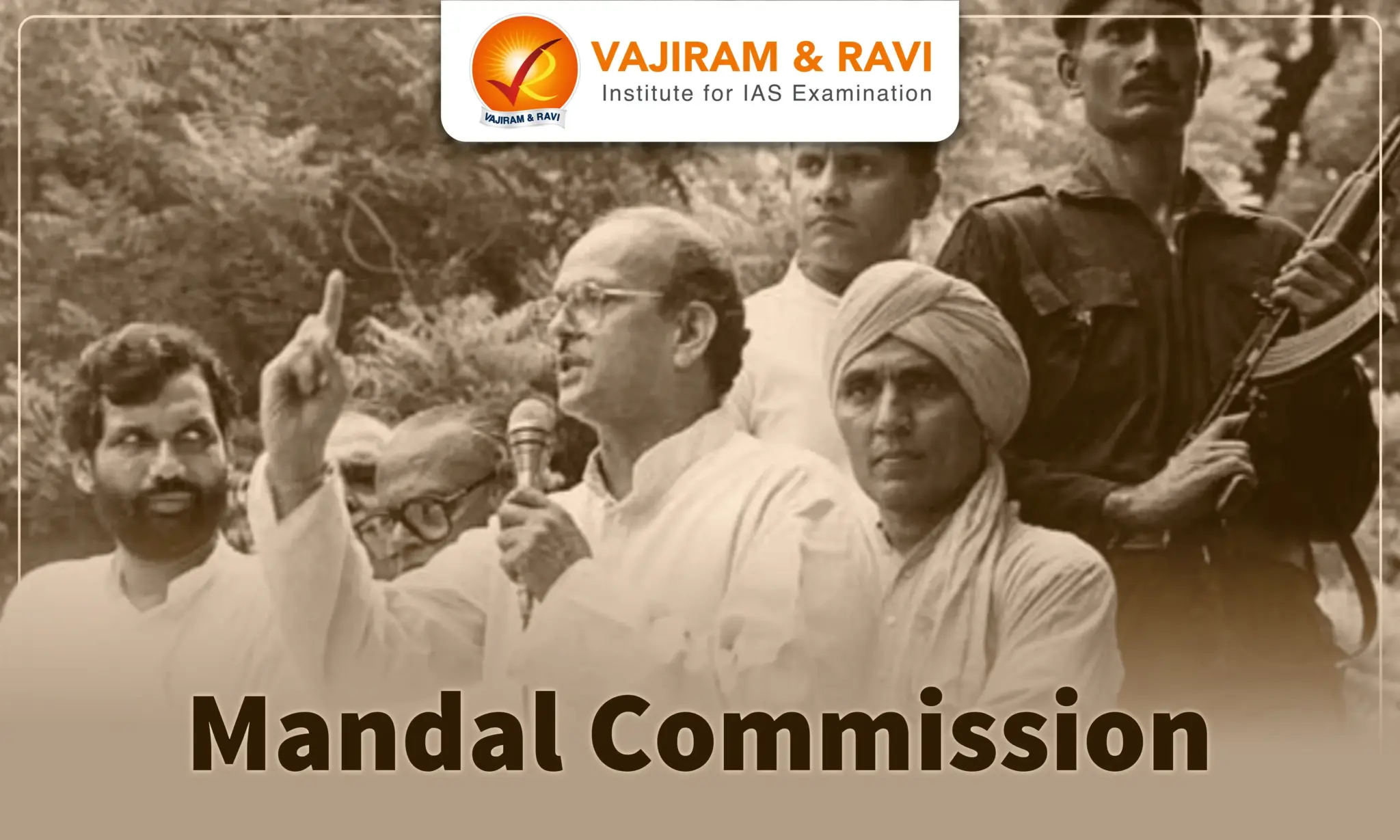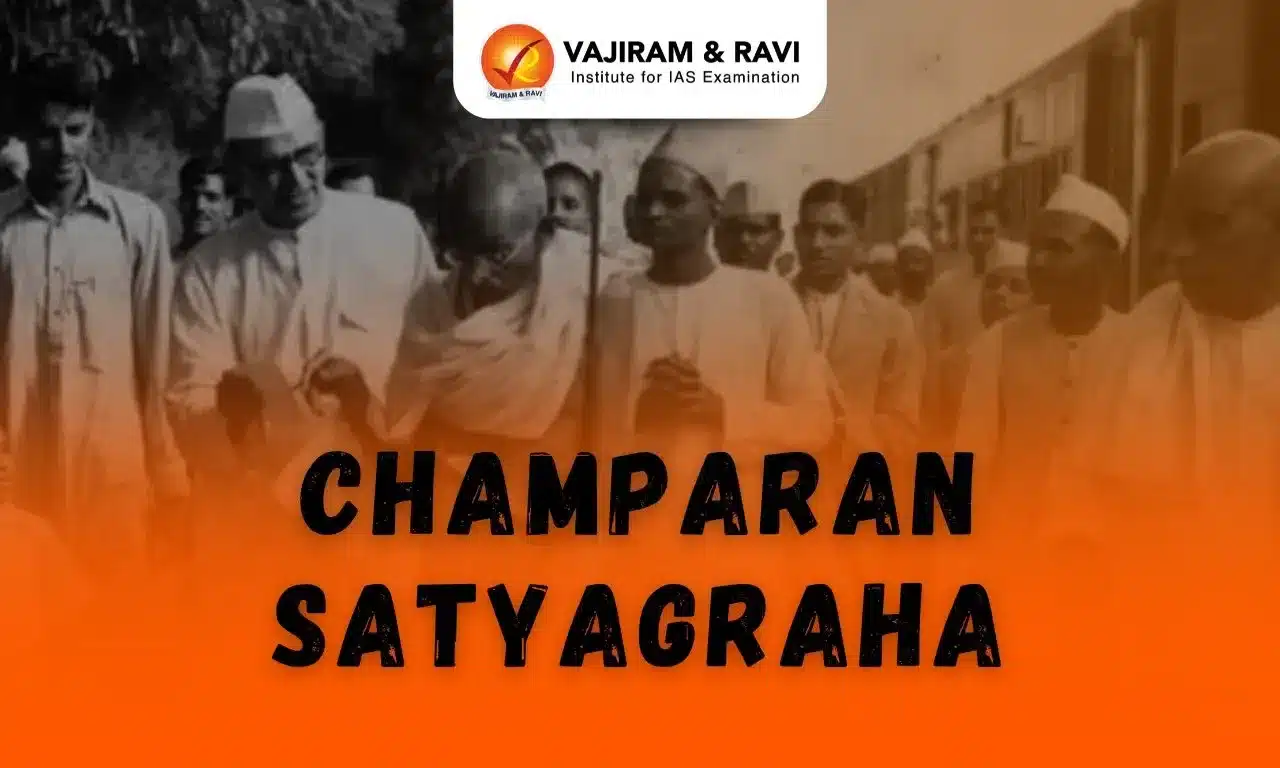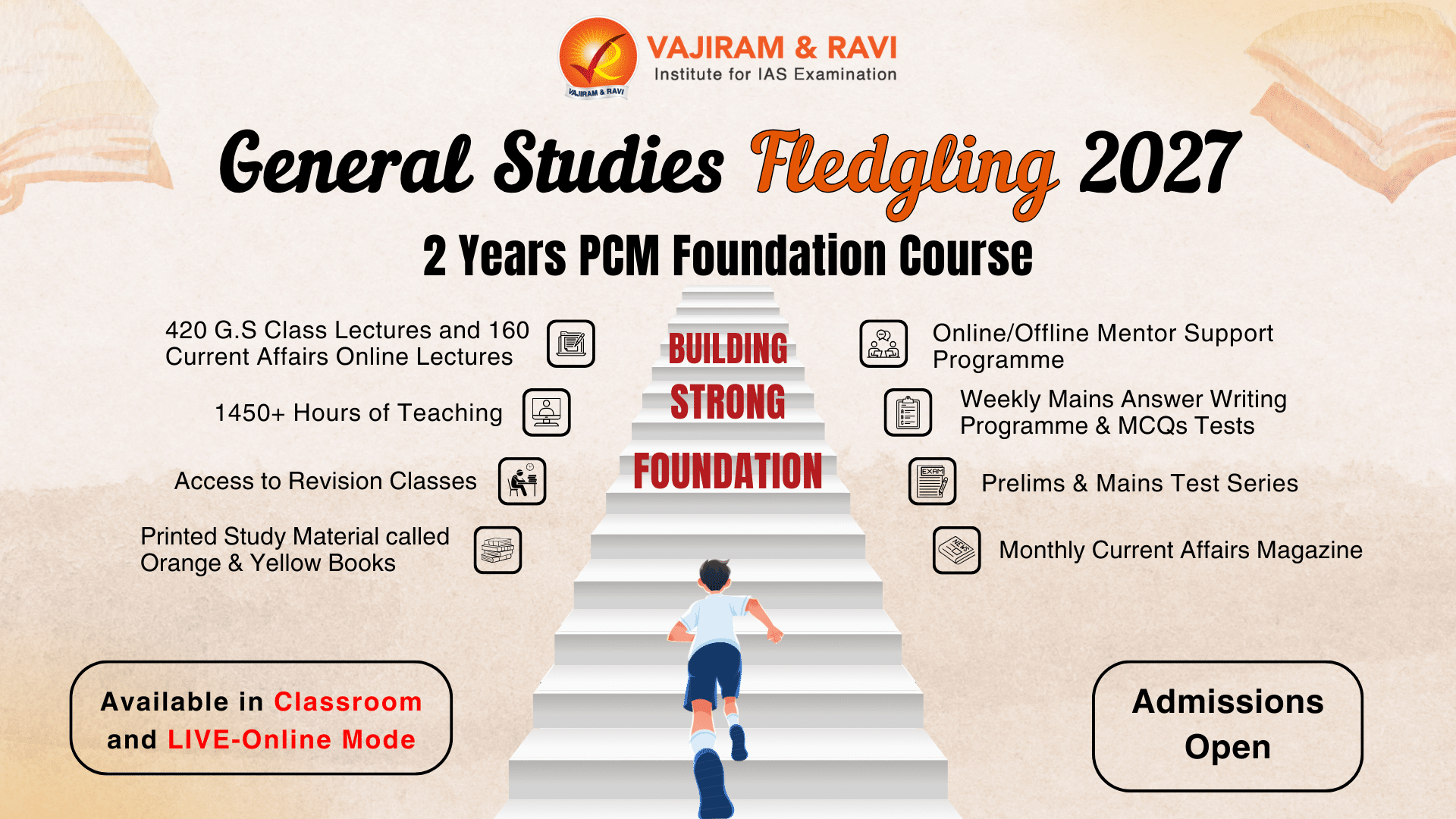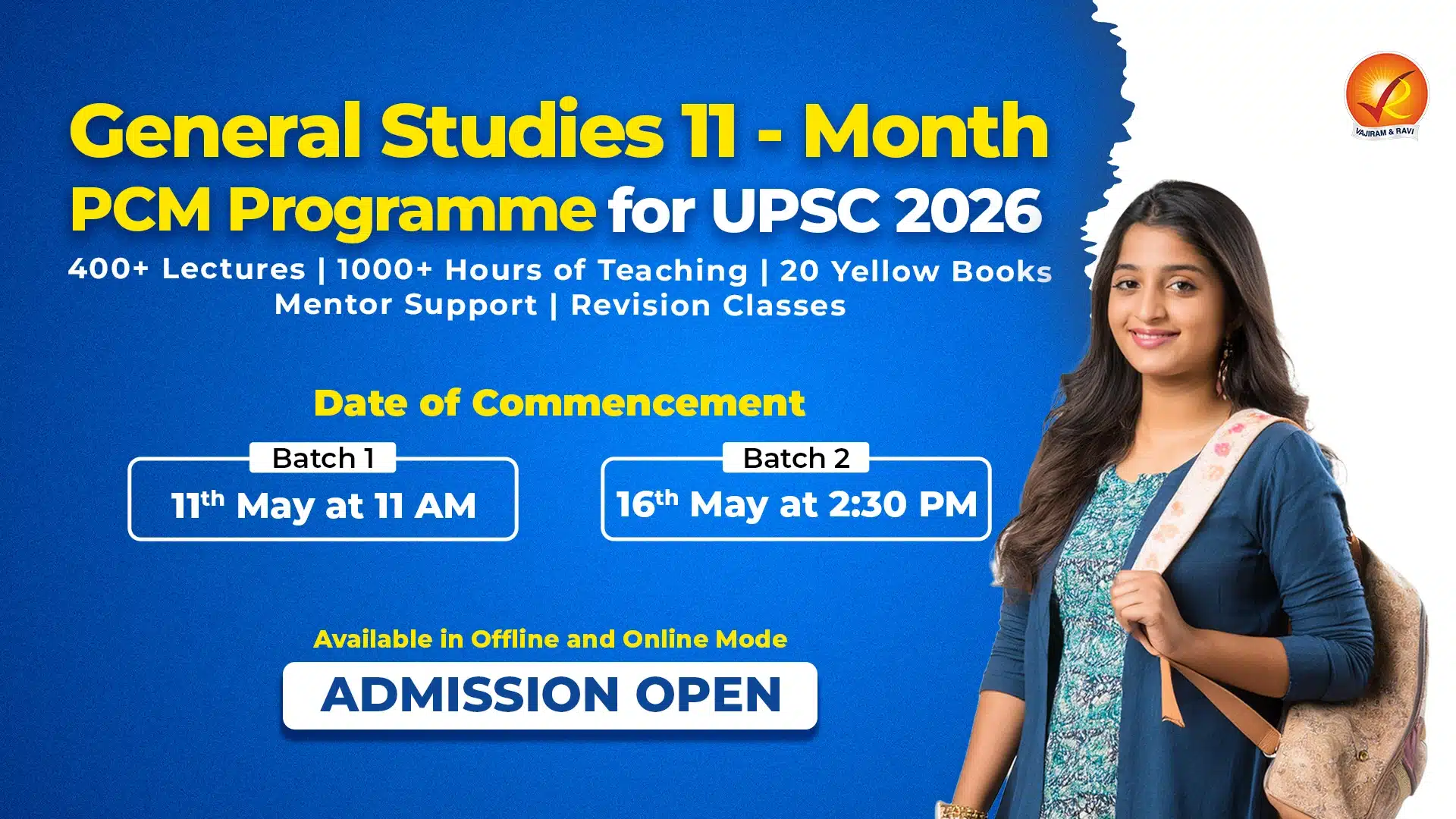The Mandal Commission, formally known as the Second Backward Classes Commission, is a pivotal moment in India’s social justice history. It was formed in 1979 by the Janata Party government to identify and provide reservations for socially and educationally backward classes; the Mandal Commission’s recommendations have profoundly shaped India’s socio-political landscape.
Mandal Commission Historical Background
The Mandal Commission, officially known as the Second Backward Classes Commission, was established in India in 1979 by the Janata Party government, led by Prime Minister Morarji Desai. However, the report was not implemented until 1990.
Pre-Independence Developments
The colonial administration recognised certain castes as “backward” and introduced the concept of affirmative action through the Government of India Act 1935, which provided reservations in legislative assemblies.
- Poona Pact (1932): An agreement between Mahatma Gandhi and Dr. B.R. Ambedkar provided reservations for Scheduled Castes in provincial legislatures.
Post-Independence Initiatives
The Indian Constitution included provisions under Articles 15 and 16 for uplifting Scheduled Castes (SCs) and Scheduled Tribes (STs). Kalelkar Commission (1953) was the first initiative in this direction, which was also the first Backward Classes Commission. Headed by Kaka Kalelkar, it identified Other Backward Classes (OBCs), but its recommendations were not implemented.
Formation of Mandal Commission
The Mandal Commission was set up on January 1, 1979, by the Janata Party government under Prime Minister Morarji Desai. B.P. Mandal, a Member of Parliament, chaired it. The Commission was tasked with identifying the socially and educationally backward classes in India and recommending measures to improve their conditions, including reservations in government jobs and educational institutions.
- Objectives: To determine criteria for defining socially and educationally backward classes; To suggest steps for advancing these classes, including reservations in public sector jobs and educational institutions.
Mandal Commission Recommendations
The Mandal Commission made several key recommendations aimed at addressing the social and educational backwardness of certain communities in India. The following are the main recommendations of the commission:
Identification of OBCs
The Commission used 11 social, educational, and economic indicators to identify OBCs. It identified 3,743 castes as socially and educationally backwards, comprising about 52% of India’s population.
Reservation in Public Employment and Education
It recommended 27% reservation for OBCs in public sector jobs and higher educational institutions. This was in addition to the existing 22.5% reservation for Scheduled Castes (SCs) and Scheduled Tribes (STs), bringing the total reservations to 49.5%.
Other Recommendations
It suggested reservations for OBCs in promotions. However, this specific recommendation was later struck down by the Supreme Court in the Indra Sawhney case (1992).
- Economic Criteria: It introduced the concept of a creamy layer, excluding the more affluent OBCs from reservation benefits. The Supreme Court first used the term “creamy Layer” in the judgement of Indira Sawhney v. UOI, also known as the Mandal Commission case.
- Families with an income above a certain threshold (initially set at Rs. 1 lakh per annum, now Rs. 8 lakh) were to be excluded from reservation benefits.
- Welfare Measures: Various welfare measures, including financial assistance and educational support for OBCs, were recommended.
- Special educational facilities designed to upgrade the students’ cultural environment should be created in a phased manner in selected areas containing a high concentration of OBCs.
- Special programmes for upgrading the skills of village artisans should be prepared, and subsidised loans from financial institutions should be granted to them for setting up small-scale industries.
- Land reforms: Implementing land reforms to improve the conditions of OBCs
Mandal Commission Significance
The Mandal Commission has had a profound and lasting impact on India’s socio-political landscape. The following are the key significances of the Mandal Commission:
- Empowerment of OBCs: Implementing the Mandal Commission’s recommendations led to the socio-economic upliftment of OBCs, providing them greater access to education and employment opportunities.
- Political Mobilization: The Commission’s recommendations galvanised political movements and parties advocating for OBC rights, significantly impacting Indian politics.
- Electoral Influence: The increased political mobilisation of OBCs influenced electoral outcomes and led to the rise of political parties such as BSP and leaders representing backward classes. This reshaped the political landscape of India, making caste-based politics more prominent.
- Inclusive Growth: The recommendations aimed to foster inclusive growth and reduce socio-economic disparities by improving access to education and employment for OBCs.
- Increased Access: Reservations in higher education facilitated increased enrollment of OBC students in universities and professional courses.
- Creamy Layer Concept: The introduction of the creamy layer concept ensured that reservation benefits reached the most disadvantaged sections of OBCs, maintaining the principle of equity within affirmative action policies.
Mandal Commission Implementation and Later Developments
The implementation of the Mandal Commission recommendations and subsequent developments have been a significant part of India’s socio-political landscape. This includes the famous Indra Sawhney case of 1992.
Mandal Commission Initial Implementation
Prime Minister V.P. Singh announced the implementation of the Mandal Commission’s recommendations in 1990. The announcement triggered violent protests, including self-immolation attempts by some students. The period saw significant social unrest and polarisation along caste lines.
Mandal Commission Supreme Court Rulings
Due to the implementation of the Mandal Commissions report, debate and protest took place, and petitions were filed. The Supreme Court has clarified the law related to the OBC reservation in various cases.
- Indra Sawhney Case (1992): The implementation of the Mandal Commission’s recommendations was challenged in the Supreme Court.
- Judgement: The Court upheld the 27% reservation for OBCs but excluded the creamy layer and ruled against reservations in promotions.
- Significance: The judgment affirmed the principle of affirmative action while ensuring it did not compromise efficiency in administration.
- Nagaraj Case (2006): The validity of reservations in promotions was challenged.
- Judgement: The Supreme Court upheld the constitutional validity of reservations in promotions for SCs and STs, provided the government demonstrates backwardness, inadequate representation, and overall administrative efficiency.
- Significance: Reinforced the need for objective criteria in implementing reservation policies.
- IR Coelho Case (2007): Concerned the power of judicial review over laws placed in the Ninth Schedule of the Constitution.
- Judgment: The Supreme Court ruled that any law placed in the Ninth Schedule after April 24, 1973, is subject to judicial review if it violates the Constitution’s basic structure.
- Significance: Ensured that reservations and affirmative action policies comply with the basic principles of equality and justice.
Rohini Commission (2017)
The Rohini Commission, which was constituted in 2017, was tasked with examining the subcategorisation of Other Backward Classes (OBCs) to ensure a more equitable distribution of reservation benefits. The commission found that just 25% of the OBC subcastes took 97% of the jobs and educational seats reserved for OBCs. Specifically, 24.95% of these opportunities went to just 10 OBC communities.
102nd and 105th Constitutional Amendment Acts
The 102nd Constitutional Amendment Act of India, passed in 2018, gave constitutional status to the National Commission for Backward Classes (NCBC). The amendment also added Article 342A, which gives the President the power to identify backward classes in each state and union territory.
- However, the 105th Amendment Act 2021 restored the power of state governments to identify socially and educationally backward classes (SEBCs), also known as Other Backward Classes (OBCs). The act also amends Articles 338B, 342A, and 366 of the Constitution.
103rd Constitutional Amendment
The 103rd Constitutional Amendment Act (2019) introduced a 10% reservation for Economically Weaker Sections (EWS) in the general category, reflecting ongoing adjustments in reservation policies.
- This was upheld by the Supreme Court in 2022, marking a significant shift in reservation policy by introducing purely economic criteria.
Relevance of Mandal Commission
The Mandal Commission’s recommendations, implemented in 1990, had a lasting impact on India’s socio-political landscape. Its relevance continues to be felt today in various aspects of social justice, politics, and affirmative action policies.
- Affirmative Action Policies: The principles established by the Mandal Commission remain relevant in shaping affirmative action policies and ensuring social justice.
- Political Dynamics: The socio-political landscape continues to be influenced by OBC mobilisation and demands for equitable representation.
- Reducing Inequality: The recommendations have contributed to reducing socio-economic disparities and promoting social inclusion by ensuring that OBCs have access to education and employment.
- Creamy Layer Concept: Introducing the creamy layer concept has ensured that reservation benefits reach the most disadvantaged sections of OBCs, maintaining the principle of equity within affirmative action policies.
- Ongoing Debates and Challenges
- Expanding Reservations: Debates continue over extending reservations to more communities and adjusting the percentage based on demographic changes.
- Economic Criteria: Discussions on incorporating economic criteria more prominently in reservation policies to ensure benefits reach the most disadvantaged.
Last updated on April, 2025
→ UPSC Notification 2025 was released on 22nd January 2025.
→ The UPSC Vacancy 2025 were released 1129, out of which 979 were for UPSC CSE and remaining 150 are for UPSC IFoS.
→ UPSC Admit Card 2025 is expected to release in first week of May for CSE Prelims Exam 2025.
→ The UPSC Prelims 2025 is scheduled to be conducted on 25th May 2025 and UPSC Mains 2025 will be conducted on 22nd August 2025.
→ Apply once through it and aspirants can apply for various government exams conducted by UPSC.
→ The UPSC Selection Process is of 3 stages-Prelims, Mains and Interview.
→ UPSC Result 2024 is released with latest UPSC Marksheet 2024. Check Now!
→ UPSC Toppers List 2024 is released now. Shakti Dubey is UPSC AIR 1 2024 Topper.
→ Also check Best IAS Coaching in Delhi
Mandal Commission FAQs
Q1. Who gave the Mandal Commission?+
Q2. When was the OBC reservation started in India?+
Q3. What were the Mandal Commission's recommendations?+
Q4. Which party introduced the Mandal Commission?+
Q5. Which PM of India implemented Mandal Commission?+
Tags: mandal commission quest
















